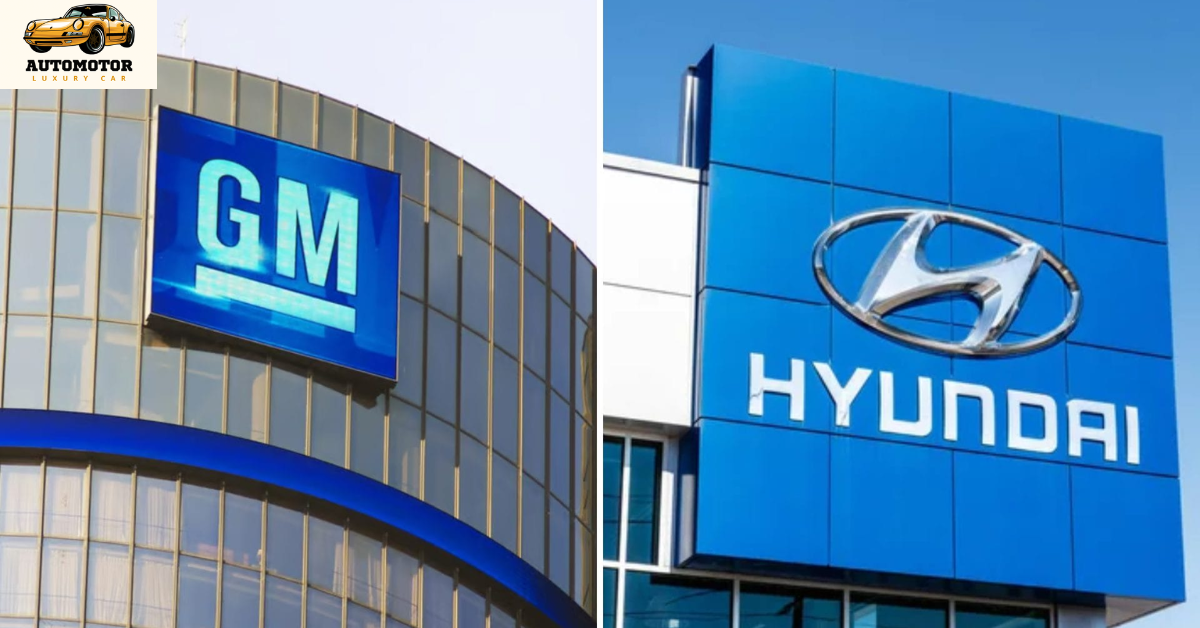On August 6, 2025, General Motors (GM) and Hyundai Motor Company announced a groundbreaking collaboration to jointly develop five vehicles, marking the first major joint-development agreement in their histories. This move signals a major shift in the global auto industry: two well-established automakers combining strengths to compete in a landscape reshaped by rising Chinese EV manufacturers, tariff pressures, and escalating development costs.
1. What the Deal Entails
- Five models to be co-developed:
- A compact SUV, a car, a pickup truck, and a mid-size pickup aimed at Central and South America. All will include both internal combustion and hybrid powertrains.
- An electric commercial van targeted specifically for the North American market.
- The companies expect to eventually produce up to 800,000 vehicles annually across the entire collaboration.
2. Why It Matters
• Navigating Rising Industry Challenges
Both GM and Hyundai are facing pressure from Chinese EV manufacturers, which are offering high‑tech, cost‑effective vehicles on a global scale. Chinese exports have intensified competition, especially in price‐sensitive regions like Latin America. Meanwhile, global supply chain issues and tariffs—including the new 15% U.S. tariff on Korean autos—have raised costs for established automakers.
• Complementary Strengths
- GM brings a strong legacy in the pickup and van segments, especially in North America and South America. Their Chevy Express/GMC Savana vans, however, are aging platforms.
- Hyundai contributes modern EV expertise, global hybrid know‑how, and fresh capital investments—such as their EV “megaplant” in Georgia, which is ramping up production for the Ioniq 5 and future models.
This partnership provides GM with access to stronger hybrid and EV technology, while enabling Hyundai to expand into the North American commercial van and pickup truck segments—areas where its presence is currently limited.
3. Strategic Timing
Earlier in 2025, Reuters reported GM and Hyundai were close to finalizing a deal to co-develop electric vans. That groundwork appears to have paved the way for this broader announcement.
The announcement follows a failed GM–Honda EV partnership and reflects a broader global trend of deepening cross-border alliances to share costs, platforms, and supply chains with competitors and peers.
4. Economic & Manufacturing Implications
Hyundai’s U.S. investments have ramped up sharply:
- Metaplant America in Georgia is now operational, producing vehicles and batteries at massive scale. Early capacity targets aim for 500,000 vehicles per year, with plans to expand further.
- Additional investments include steel and battery supply capacity, aiming to localize production and reduce trade-related risks.
For GM, co-developing modern vans and pickups with Hyundai allows cost-sharing across development and future supply chain efficiencies, especially important as they update older commercial platforms.
5. Risks & Open Questions
- Where will manufacturing take place? Neither company has confirmed final manufacturing locations. Hyundai has facilities in Georgia, Alabama, and Brazil; GM has strong Latin American operations—but details are pending.
- Execution risk: Developing five models is ambitious. Platform alignment, regulatory certification, and managing joint production timelines across continents will be complex.
- Market sensitivity: Latin America historically favors low-cost vehicles, so pricing strategy will be critical.
6. Market and Competitive Impact
- In Central and South America, the collaboration could strengthen both brands with cost-competitive hybrid and combustion options, fending off Chinese imports.
- In North America, the new electric van could directly challenge Ford’s Transit EV, Stellantis’s Ram EV van, and emerging Chinese models.
Meanwhile, for Hyundai, entering segments like mid-size pickups and commercial vans expands its presence in the U.S. and Canada, diversifying past reliance on passenger EVs and sedans.
7. Broader Industry Implications
This deal reflects a shift in the auto industry alliances pattern:
- It’s akin to joint ventures among Chinese EV startups and U.S. tech companies.
- It mirrors legacy automakers sharing platforms (e.g., Stellantis-Fiat, GM-Ford chip and battery partnerships).
- It underlines that scale and collaboration are now essential to spread rising R&D, regulatory, and trade risk costs.
- Governments’ trade policy moves—for instance, new U.S.-Korea auto tariffs—may have accelerated the urgency for cooperation.
8. The Road Ahead
Within the next few years, watchers will be tracking key developments:
- Model names, specs, and launch timelines for the five vehicles.
- Manufacturing sites and localization strategies—particularly in Latin America and North America.
- Consumer prices and features, against competitive benchmarks.
- Supply-chain partnerships (e.g. batteries, semiconductors) that emerge from the alliance.
Conclusion
The GM–Hyundai five‑vehicle deal marks a significant and strategic pivot for both automakers. For GM, it is a way to modernize its van and truck portfolio while embracing hybrid and EV technology. For Hyundai, it opens new segments in the U.S. and Latin America that complement its growing EV footprint. At a time when competition is intensifying and development costs are soaring, this alliance offers scale, distribution synergy, and shared investment—an emblem of how the automotive world is evolving.
